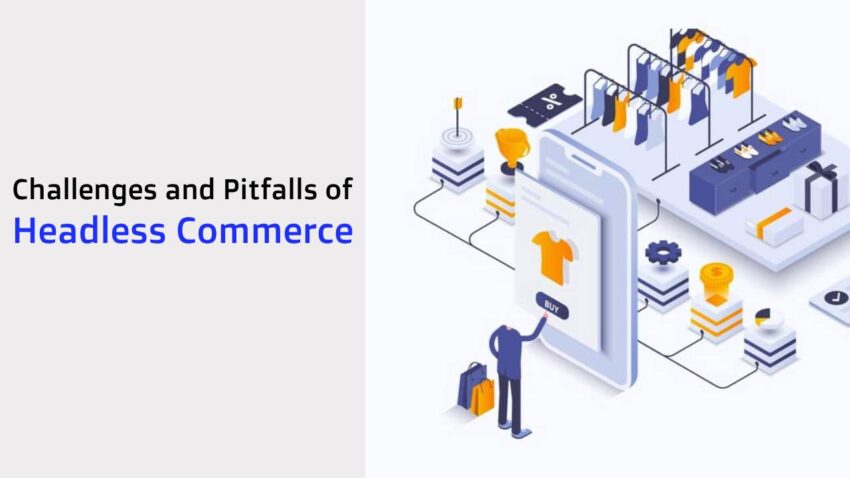In the ever-evolving world of e-commerce, businesses are constantly seeking ways to stay competitive and offer cutting-edge shopping experiences. One strategy that has gained considerable attention is “headless commerce.” This approach decouples the front-end presentation layer from the back-end commerce functionality, allowing for greater flexibility and innovation. However, while the benefits of headless commerce are enticing, it’s crucial to navigate the challenges and pitfalls effectively. In this post, we’ll explore the intricacies of headless commerce, highlighting both the potential rewards and the obstacles that lie ahead.
Challenges and Pitfalls of Headless Commerce
1. Integration Complexity
One of the primary challenges of headless commerce is the complexity of integrating multiple systems. In traditional e-commerce, the front-end and back-end are tightly coupled, simplifying data flow and interactions. In a headless setup, however, various systems must communicate seamlessly. This requires skilled developers who can design and maintain APIs, ensure data consistency, and troubleshoot integration issues.
2. Cost Considerations
Headless commerce can appear costlier initially due to the need for additional development work and infrastructure. Skilled developers and specialized tools may come with a higher price tag. However, it’s essential to consider the long-term cost-saving potential. The flexibility of a headless architecture can lead to reduced maintenance costs and quicker adaptation to changing market demands.
3. Content Management Challenges
Effective content management is crucial for delivering engaging customer experiences. In a headless commerce environment, managing content can be challenging. Content must be delivered seamlessly across various channels and devices, and content updates can be cumbersome. To address this, a capable Content Management System (CMS) is often necessary to streamline content creation and distribution.
4. Performance Optimization
Performance optimization is paramount in headless commerce. With multiple systems interacting, there is an increased risk of performance bottlenecks. Slow load times or unresponsive pages can drive customers away. Investing in performance monitoring and optimization tools is essential to ensure a smooth shopping experience for users.
5. SEO Concerns
Search Engine Optimization (SEO) is critical for e-commerce success. Headless commerce can present SEO challenges, such as ensuring search engines can crawl and index content efficiently. Addressing SEO concerns from the outset, through strategies like proper URL structure and metadata management, is essential to maintain visibility in search results.
6. Security Risks
Headless commerce systems introduce potential security vulnerabilities and risks. With multiple touchpoints and data transfers between systems, there is a need for robust security measures. Protecting sensitive customer information and maintaining compliance with data protection regulations are non-negotiable.
Pitfalls to Avoid
1. Lack of Strategy
Proceeding with headless commerce without a well-defined strategy is a significant pitfall. A clear roadmap is essential to avoid wasting resources and time on ineffective implementations. A strategy should encompass goals, technology choices, and a plan for seamless execution.
2. Neglecting Scalability
Scalability is often overlooked but is crucial for businesses with growth ambitions. Failing to plan for scalability from the beginning can result in costly system overhauls or disruptions as traffic and demand increase. Headless commerce systems must be designed with scalability in mind.
3. Ignoring Customer Experience
Finally, neglecting the customer experience (UX) can lead to significant problems. In the pursuit of technical innovation, businesses must not lose sight of their customers’ needs and preferences. A seamless and user-friendly shopping experience should remain a top priority.
Conclusion
While headless commerce offers exciting opportunities for businesses to create innovative shopping experiences and stay competitive, it is not without its challenges and pitfalls. Integration complexity, cost considerations, content management challenges, and the importance of performance optimization, SEO, and security must be carefully navigated. Additionally, businesses must avoid pitfalls such as lacking a clear strategy, neglecting scalability, and ignoring customer experience.
To succeed in the world of headless commerce, meticulous planning, skilled development teams, and the use of the right tools and strategies are paramount. By addressing these challenges and pitfalls proactively, businesses can harness the power of headless commerce to deliver exceptional shopping experiences and stay ahead in the ever-evolving e-commerce landscape.


